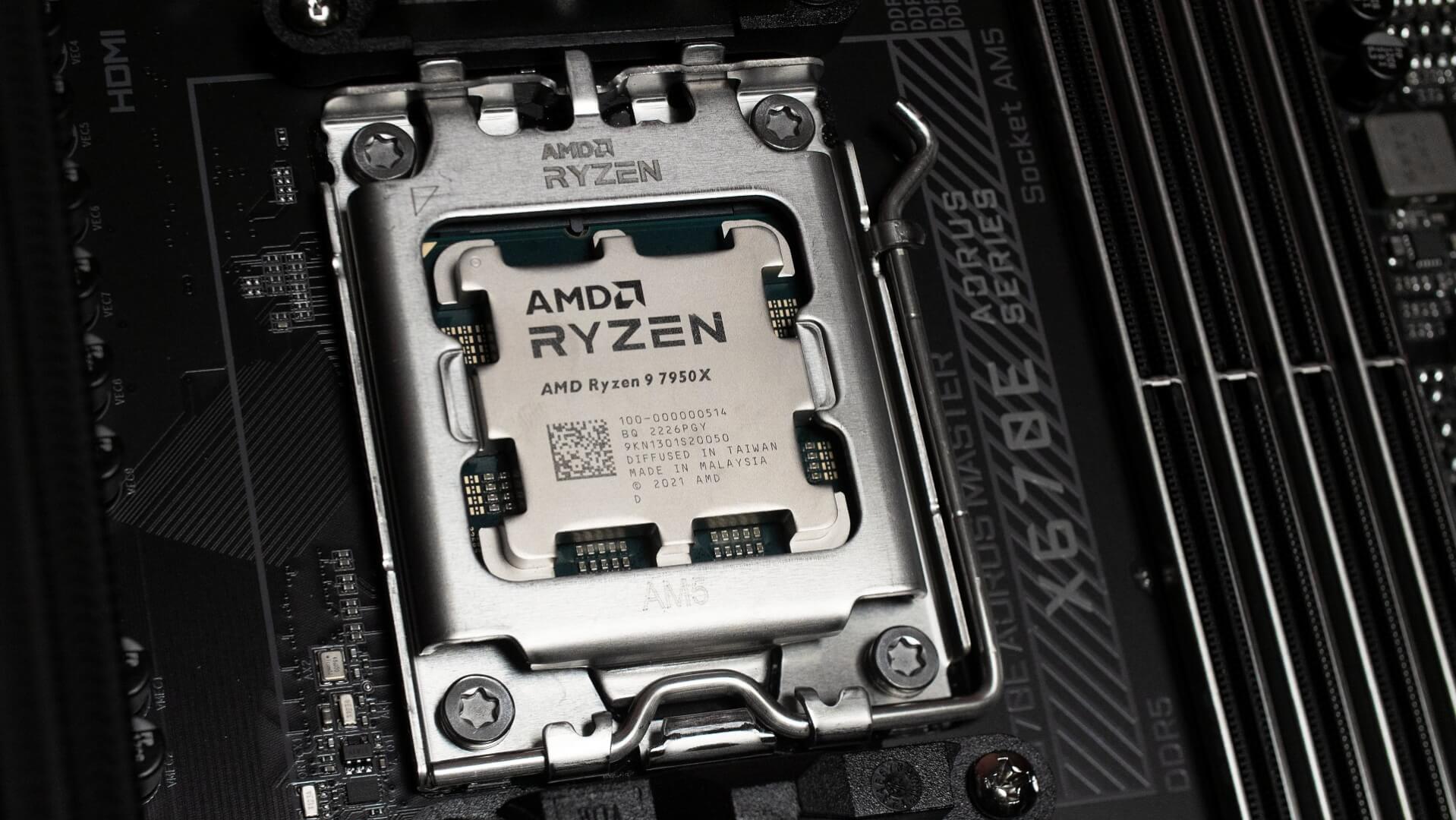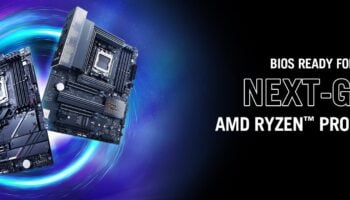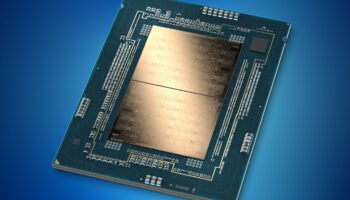The next-gen Ryzen 7000 processors are engineered to run at 95°C, day in and day out, throughout their life cycle. AMD claims that all the quality analysis for the Zen 4 desktop chips was done at 95 degrees Celsius. In fact, this is the same design target the chipmaker has had for several older Ryzen families. AM5, with its 230W PPT limit, allowed AMD to capitalize fully on this front with a TjMax of 95 C:
| TDP | PPT Limit | TDC Limit | EDC | Voltage Range | CPU TjMax |
| 65W | 88W | 75A | 150A | .0650-1.45 | 95 C |
| 105W | 142W | 110A | 170A | .0650-1.45 | 95 C |
| 170W | 230W | 160A | 225A | .0650-1.45 | 95 C |
In the below graphs, you can see that the gaming performance of the Ryzen 9 7950X is identical across the stock Wraith Prism air cooler and the NZXT Kraken X63 liquid cooler:
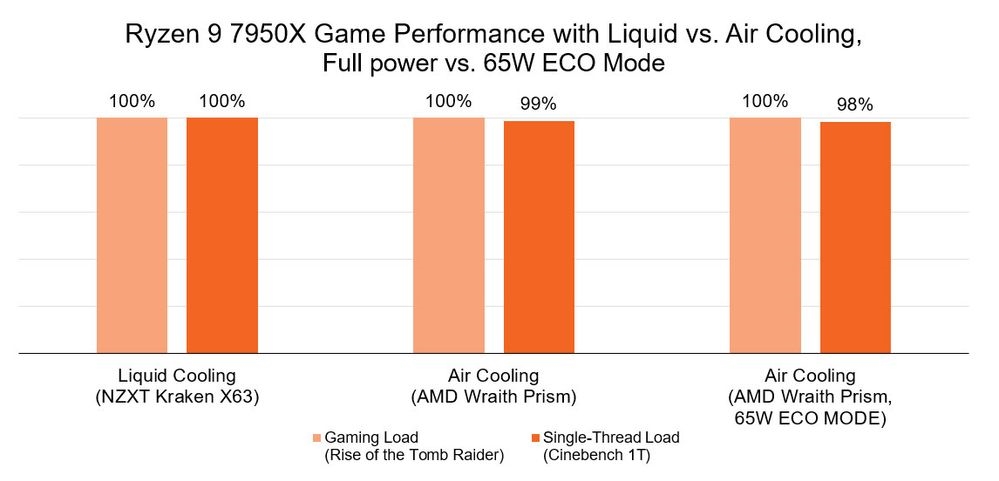
Multi-threaded loads such as Cinebench nT take a small hit with low-end air coolers, but nothing you can’t get back with some basic tuning:
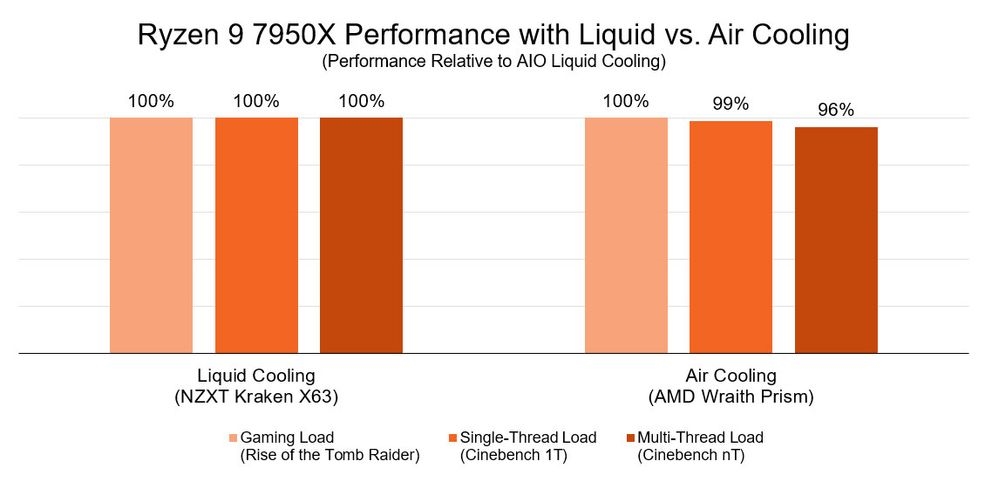
This last chart is the most interesting. The Ryzen 9 7950X adapts to the cooling solution to maximize the performance of a given configuration. It runs 5C cooler with the Kraken X63 in gaming, but content creation pushes it to 95C in both cases. The catch? The air-cooled setup loses 4% performance as the boosting algorithm adjusts the power consumption to meet the 95C limit.
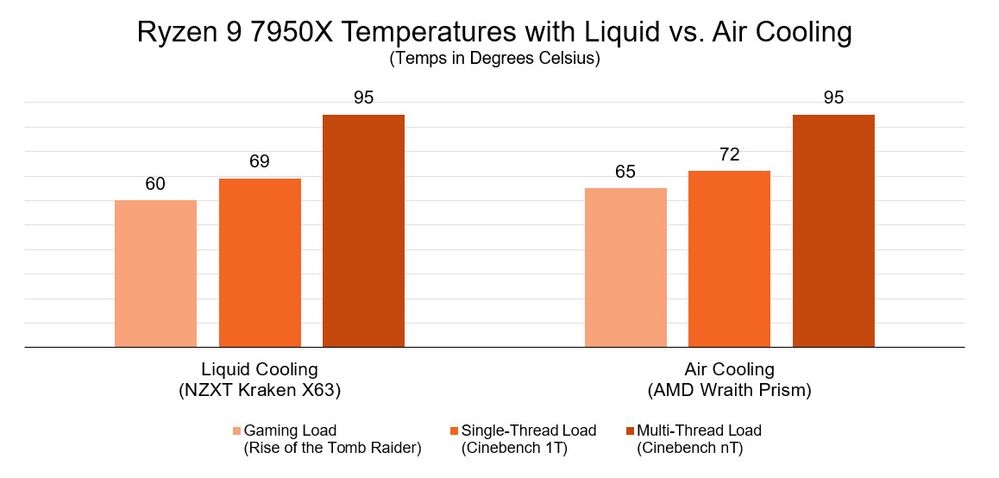
Going from the Ryzen 5000 to the 7000 families, there have been no changes to the Precision Boost 2 algorithm. The sole difference is the additional overhead provided by the 170W TDP on the X models, allowing AMD to push the Tj Max from 90C on Zen 3 to 95C on Zen 4.
The Ryzen 9 5950X was bottlenecked by power rather than temperature. The 7950X is the opposite. With its higher 230W PPT, it will hit the temperature limit well before hitting the power wall. This behavior can be replicated even with its TDP set to 105W.
You will have seen in reviews that under intense all-core workloads (such as CB nT, Blender, etc.), the CPU will reside at or around 95 C. The same workload on a 5950X would probably result in significantly lower temperatures. The difference is not a change in how PB2 operates but a result of higher socket power. Put simply, a Ryzen processor will push performance until it hits either power or temperature limitation. Its 142W PPT limit limited the Ryzen 5950X before it hit the temperature limit; The Ryzen 7950X has more power, so it will hit the temperature limit before hitting the 230W PPT limit.
If you want to run an apples-to-apples generational comparison, set the 7950X to the 105W TDP settings in the table above and look at the PPT and temperature readings. You should notice the 7950X is well below 95 C but max at 142W PPT. It will also score significantly higher than the 5950X in Cinebench nT, showing the true efficiency and IPC uplift of the 7950X in the process.
Furthermore, the Ryzen 7950X should only hit the 95 C thermal limit in heavily multi-threaded workloads like Cinebench nT or Blender. Gaming is not limited by power or temperature but by latency and single-thread performance. As a result, the 7950X should operate at 70 C in gaming with an AIO liquid cooler. Ergo, purchasing a better cooler will not improve gaming performance, as the thermals aren’t the limiting factor.
